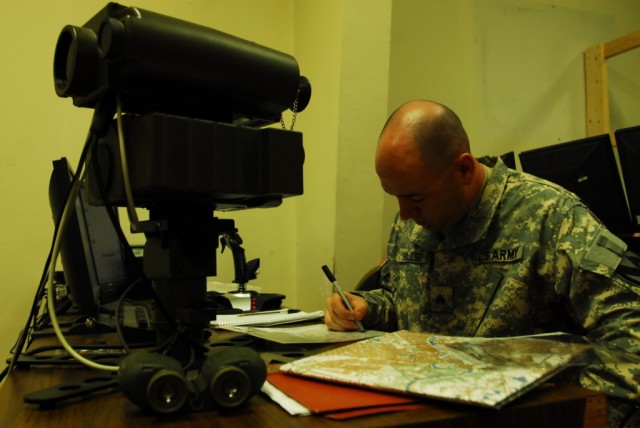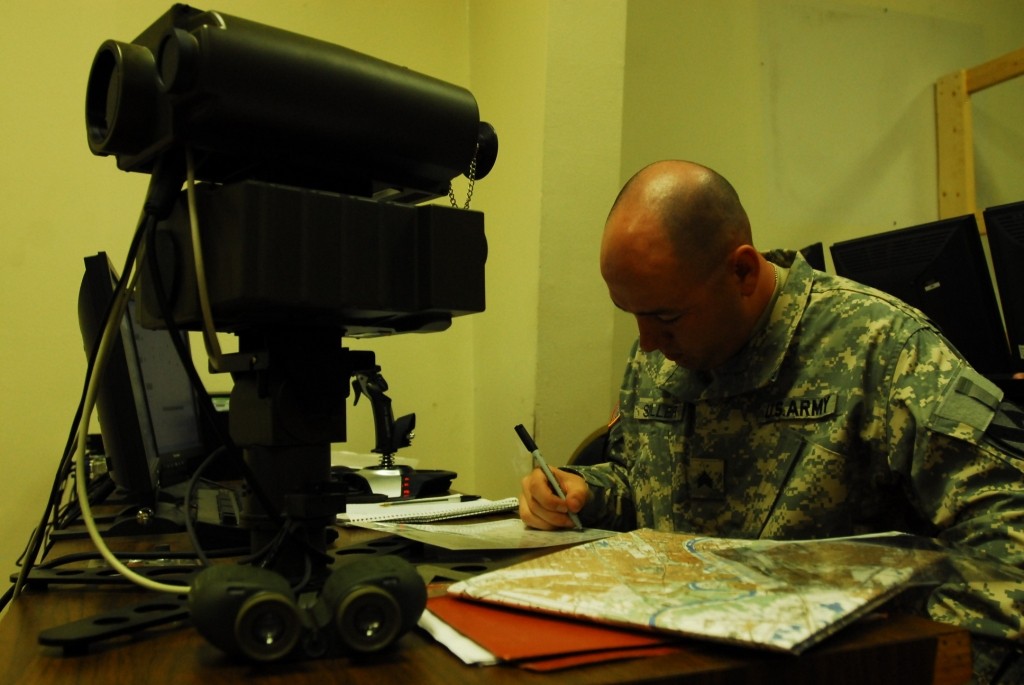
FORT HOOD, Texas - Soldiers who operate independently, miles away from the closest field artillery support, can still bring down tons of explosive power from aircraft on enemies if necessary. But it takes a little training and a lot of confidence.
Being able to call in aerial fires isn't as easy as just picking up a two-way radio; which is why Soldiers from 1st Battalion, 5th Cavalry Regiment, 2nd Brigade Combat Team, 1st Cavalry Division, participated in joint fires observer (JFO) recertification, here April 22, to refresh their knowledge and their ability to call in close aerial support.
During the course, Sgt. Michael Monk, from Sacramento, Calif., and Sgt. Matthew Spiller, from Kalispell, Mont., practiced calling in surface-to-surface missiles, air-to-surface support, naval gunfire and an AC-130 aircraft in night and day scenarios.
Practicing communication between Army JFOs and Air Force joint terminal attack controllers, who are responsible for calling in aerial support and acting as middlemen between Soldiers on the ground and pilots in the air, was an important part of the class.
"This is integrating the Army with the Air Force and teaching Soldiers how to call in aircraft," said Sgt. 1st Class Leo Davis, from Woodward, Okla., a fire support non-commissioned officer with 2nd BCT.
According to Air Force Tech. Sgt. Shawn Leonard, a JTAC working with the Soldiers, the JFOs are an important part of his job; they allow Soldiers on the ground to relay precise coordinates to pilots, who can provide cover and eliminate dangerous threats to Soldiers and civilians.
"Artillery is not always as accurate as having an aircraft over your head that sees what's going on and has precision weapons," he explained.
"[Forward observers] should know how to do this," said Monk. "You can't always call in artillery. Airplanes can get to the target more easily."
Both Spiller and Monk went through the initial two-week JFO certification course at Ft. Sill, Okla., and are required to attend recertification courses every six-months.
These Soldiers are two of only 12 JFOs in the entire 4,000 Soldier brigade.
According to Davis, it has been difficult to get Soldiers into the JFO course because it is booked so far in advance, but he is working to get a JFO mobile training team to Fort Hood to certify 20 more Soldiers in the brigade. The Army eventually hopes to have as much as 50 percent of forward observers JFO-certified.
While the security environments in Iraq and Afghanistan differ from one another, Monk thinks having assets like joint fires can only improve the confidence of any unit facing hostile fire.
"It helps you feel a lot more confident being on the ground knowing that you can call in air support."

Social Sharing